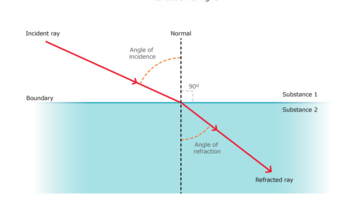By using the example of spearing a fish, Associate Professor Gordon Sanderson, an ophthalmologist from Otago University, explains the principle of refraction. Refraction is as a consequence of light travelling at different speeds through different media. The bending of light coming to your eye from the fish at the water/air interface makes it appear to be further back than it actually is.
Transcript
ASSOCIATE PROFESSOR GORDON SANDERSON
Light travels more slowly through a denser medium, so water or glass or any other refracting material, which is transparent obviously, slows down the progress of the light. And if the light in the case of a lens has less distance to travel than the light in the middle, then obviously the light in the middle will be slower and this light will end up going faster and it will start where it … it started off going in like so, it ends up coming out like so because it’s got to stay in line, in phase with the light which is coming from the middle.
If there’s a fish in the water and you look at the fish, you’re actually seeing it through a medium which is denser than the air that you’re standing in, and what it does is it bends the light. The light comes from the fish, hits the surface which is where the air-water interface takes place, and it gets bent, so your eye ends up seeing the light instead of coming straight back like so, the light comes back and then it’s bent and it enters your eye. But your eye thinks, “Aha, the fish is over there.” It’s not. The fish is actually down there but the light reaching your eye is coming in that direction so you interpret it as if the fish is further back than it actually is.
So when you go to spear it with your flounder spear or what have you, you miss it, and that’s the principle of refraction.


